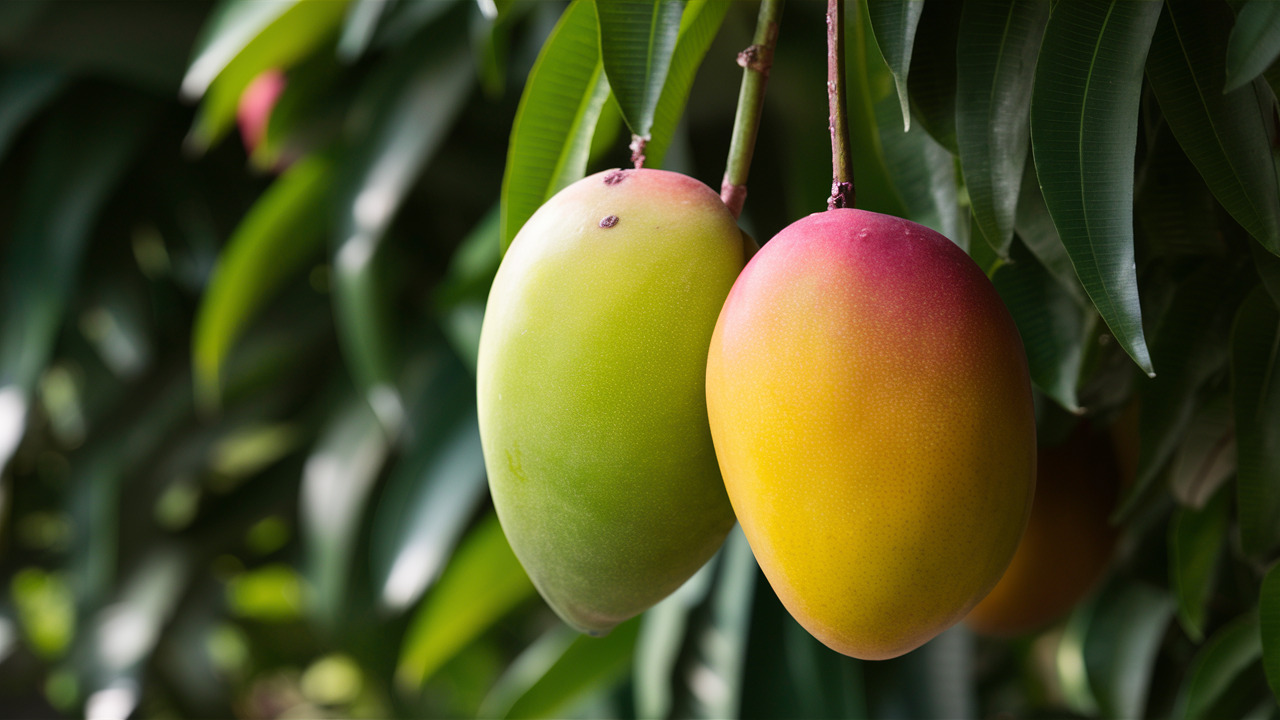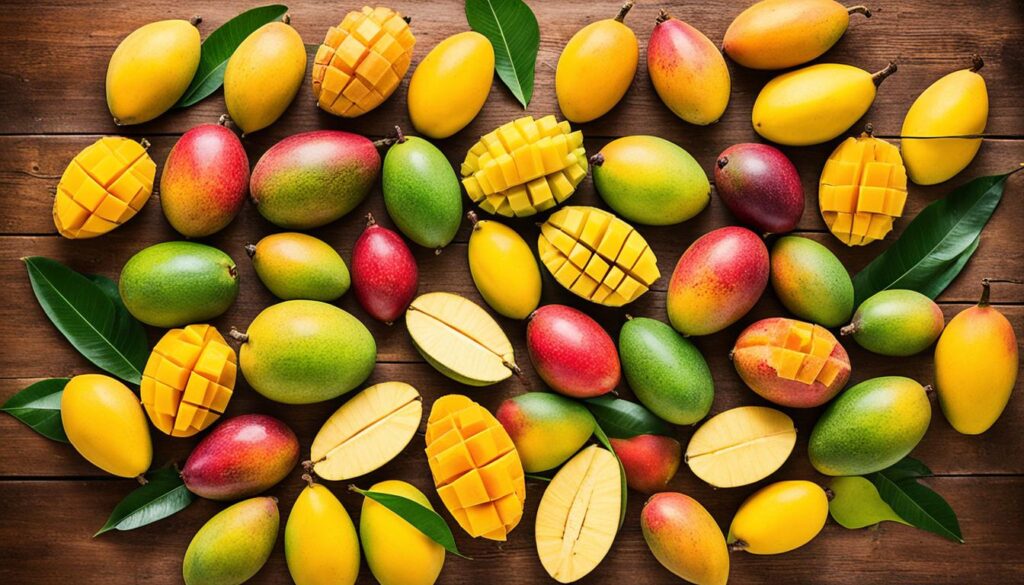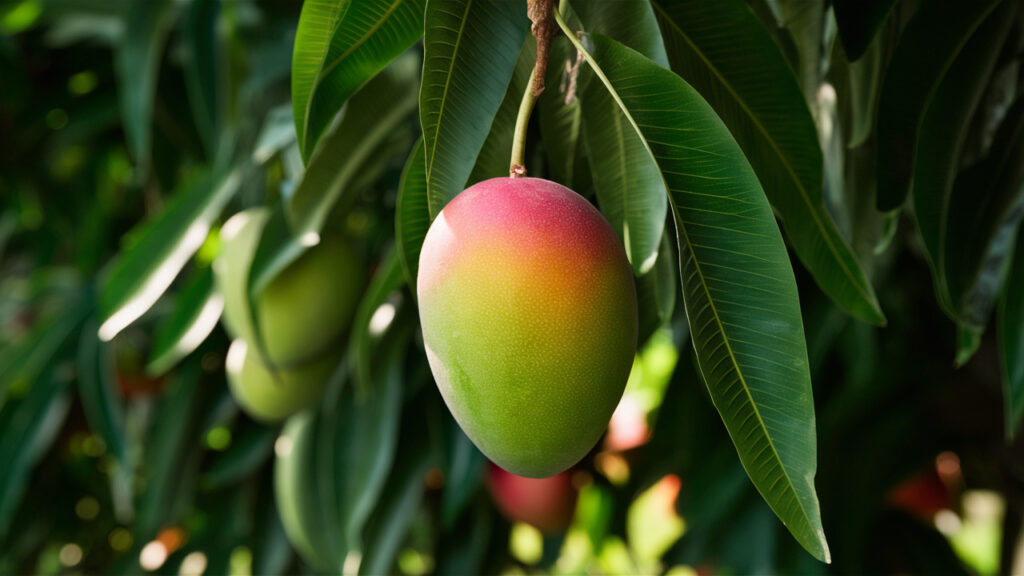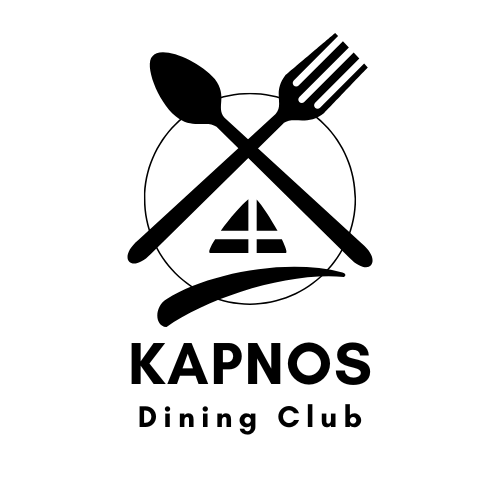Many Americans love mangos. Mango is increasingly seen less as an “exotic fruit” in the United States. During 2022, the mango market in the United States grew almost 11%, going from 1.05 billion pounds in 2021 to 1.17 billion pounds. Most people assume Mangos are only available in the Summer. However, it is important to know that in the United States Mangos are in season all year long.
However, availability of certain mango types may vary within the year. If you are interested in a specific type of Mango then please read on, as we have a list of Mangos by type and when they are in Season.
When are mangos in season?
There are mangoes available throughout all the months of the year, but you may need to select a specific type of mango cultivars depending on the time of year, and for a few months of the year you need to rely on imported Mangos. You should also know that the majority of Mango sold in the USA are imported from Mexico.

Generally, mango season peaks from May to September mainly grown domestically in Florida and California, with imported tropical fruits continuing to be sold year round. Furthermore, certain mango varieties may or may not be available within a given time frame depending on where they originated from and the local tropical fruit season.
It’s important to note most Mangos sold in the grocery store are imported, as there are only limited regions that can grow and far higher demand domestically in the USA than supply.
Where are Mangos imported from?
Mexico is the fourth largest mango producing country. This means that for America, mango imports come from our neighbor: Mexico. Over 85% of all imported mangos in the U.S. are from Mexico while other countries like Brazil, Peru and Haiti also export the fruit to America. A staggering 70% of the tropical fruit sold in the USA is from Mexico.

Mango Seasonality Across Varieties
Different mango varieties have distinct seasons when they are at their peak flavor and availability. Included here is a list of some of the most popular types and when they are available . Whether you prefer a sweet and juicy mango or one with a tangy twist, there is a mango variety to suit every palate.
Let’s take a closer look at some of the popular mango varieties and their respective seasons:
- Mango Varieties: There are numerous mango varieties grown globally, each with its own characteristics and taste profile. Some well-known mango varieties include Alphonso, Ataulfo, Kent, Tommy Atkins, and Keitt, with different mango harvest time.
- Seasonal Mangoes: Mangoes are generally available from March to September, with peak seasons varying across different varieties, and some having limited availability in winter. For example:
| Variety | Availability |
|---|---|
| Alphonso | April to June |
| Ataulfo/Honey | All year |
| Kent | All Year |
| Tommy Atkins | 11 months of the year (not January) |
| Keitt | March to September |

Keep in mind that these seasons can vary based on factors such as location, climate, and market availability.
Exploring mango seasonality allows you to appreciate the diversity and richness of different mango varieties. Whether you’re planning to bake a mango pie or enjoy a refreshing mango smoothie, knowing the seasonality of various mangoes ensures you are using the freshest and most flavorful fruit in your recipes.

Selecting and Storing Mangos for Optimal Freshness
Proper selection and storage are the keys to enjoying the best tasting mangos. Here are a few guidelines for you to follow so that you can taste the most delicious juicy and flavored mangoes:
- Choosing Ripe Mangos: It should be slightly soft to touch but not mushy. Avoid those with wrinkled skins or any visible black spots as it indicates an overripe fruit. The color of its skin may vary in different varieties, so ignore it and instead check only its texture and smell..
- Checking Ripeness: Do a light squeeze on a mango, and you will know if it is ripe. A ripe mango will yield slightly when squeezed but remain hard. If it feels too hard, allow some days for ripening. You can also sniff at the stem end of a mango; when the aroma is sweet and potent, then it probably is ready for eating.
- Storing Mangos: If your mangos are fully ripe and you will consume them within one or two days, keep them at room temperature. To make them last longer without ripening quickly, place your mangos in the fridge container. However, remember that cold storage impacts on fruit’s texture whereas flavor may be muffled as well; therefore consider these factors while cooling your preserved mangos before eating them by giving them enough time to attain room temperatures that enhance their flavors as well as juices.
- Handling Mangos: When handling a mango take care not to harm it by pressing or banging fruits against anything else including walls or other objects such as tables where they might get damaged if placed under heavy things or where there is too much congestion around them making the fruit easy to be squashed into juice dripping from shattered skins..

